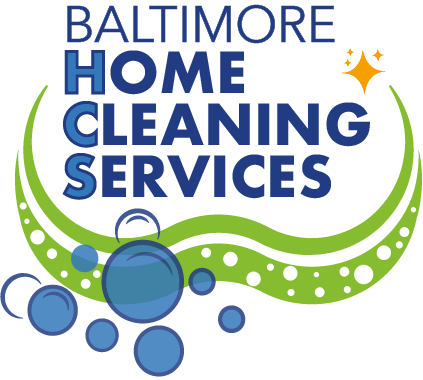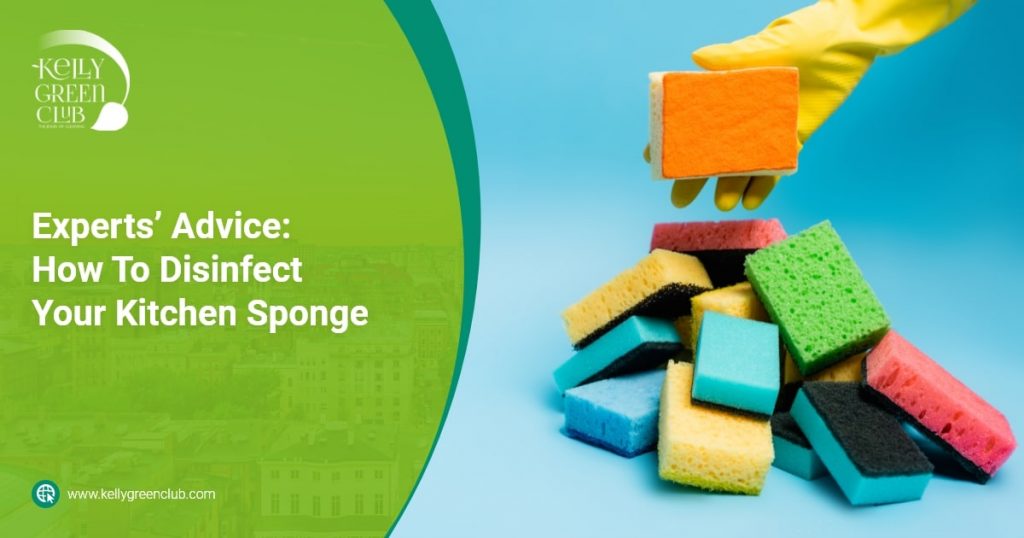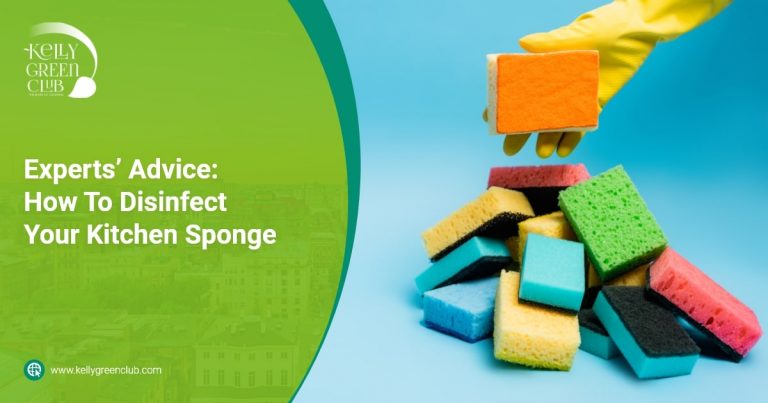Food and humidity make the kitchen a perfect home for bacteria. Keeping the whole room clean and disinfected is essential, but there are spots where microbes concentrate.
In this blog entry, we are speaking about one of those places: the kitchen sponge. Probably you have already heard about kitchen sponges and how they are full of germs. Here we tell you the details about this issue and how you can disinfect your kitchen sponge!
Why the fuss about kitchen sponges?
We all know by now how germs can get us sick. A dirty sponge could easily become a disease transmitter and compromise the immune system of your household.
Moisture and contact with food residue make the kitchen sponge perfect for microbes to thrive and grow. The authors of an often-quoted study mentioned that “kitchen sponges not only act as reservoirs of microorganisms, but also as disseminators over domestic surfaces.” It is not a surprise that this cleaning tool is one of the grimiest places inside your home.
Instead, the question should be: how do you kill germs on a sponge? Disinfecting a kitchen sponge is challenging because we are not only dealing with one type of germ. You can’t get rid of every species of bacteria the same way. However, according to experts, there are a few effective ways to sanitize your kitchen sponge. 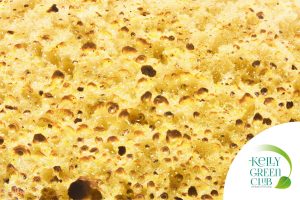
What do the experts say about kitchen sponges?
Several cleaning methods for your kitchen sponge claim to get rid of the most harmful germs. However, there is no consensus on which is the most effective way to disinfect it once and for all.
Some studies claim that the microwave is the best disinfection method for a kitchen sponge, inactivating the pathogens with the heat and microwave irradiation. However, other experts say that it doesn’t make a difference because the weak bacteria killed are soon replaced by the strongest, surviving ones. The only definitive solution for a contaminated sponge seems to be replacing it before the germs take it over.
Although replacing your sponge might be inevitable, some methods could keep it in acceptable conditions for a while and extend its useful life.
How do you disinfect a kitchen sponge?
Microwave method
Does microwaving a sponge kill germs? A study found that exposing a kitchen sponge to full power microwaving for 2 minutes can kill 99% of the bacteria.
Needless to say that you should never use this method on a sponge with a metallic scrub! Using the microwave to sanitize your kitchen sponge is fairly straightforward, but you need to be careful when trying out this technique. Here we tell you how it’s done:
- Wet the sponge and put it inside the microwave. The sponge should be completely wet. Otherwise, it might catch fire!
- Use the highest setting in your microwave and cook it for at least a minute.
- Don’t remove it right away! The wet sponge is hot and can injure you if you handle it. Wait at least 10 minutes before removing it from the microwave.
- Wring the sponge to remove the excess water and let it dry completely in a clean spot.
Dishwasher
The dishwasher could work as a sponge disinfection method too! Using this appliance is an excellent alternative to the microwave, especially if your kitchen sponge has metal on it. This method seems less risky than the previous one, while it might be almost as effective. There are only two essential steps:
- Put the sponge inside the dishwasher and run the hottest cycle in the appliance. Try to avoid the dish rack to lessen cross-contamination risk.
- Then, run a dry cycle.
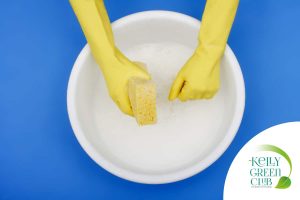
Soaking the sponge in a bleach solution
Chlorine bleach is present in most households, but many homeowners don’t feel comfortable using it as their first cleaning choice. We understand it. At Kelly Green Club, we always opt for the greener—95% of our products are eco-friendly and green certified!
However, when it comes to harmful viruses and bacteria, harsh chemicals are undoubtedly effective. The Good Housekeeping Institute found that using a bleach and water solution kills 99.99% of the tested bacteria. Here are the steps:
- Mix 3/4 cup of bleach in a gallon of water.
- Then, soak the sponge for five minutes to let the solution work.
- Rinse the clean sponge and let it dry completely.
Using undiluted white vinegar
How do you disinfect a sponge naturally? With vinegar! This common household item works as a mild disinfectant, being the greener alternative to chlorine bleach. You don’t need to dilute the vinegar because the sponge needs its full sanitizing power to get the job done.
- Soak the dish sponge in full-strength vinegar for 5 minutes.
- Rinse the sponge and let it dry.
Disclaimer: This method should reduce the number of germs. However, it’s not as effective as the other three techniques displayed above in this blog post.
Does boiling a sponge sanitize it?
Not really. While it may kill some germs in a dirty sponge, it falls behind the other methods listed here. Even adding dish soap to the boiling water is not as effective as using a microwave.
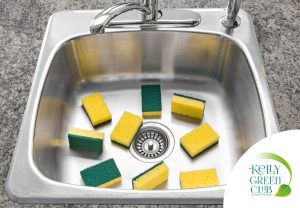
When it’s a good time to disinfect your kitchen sponge?
You should disinfect your dish sponge way more frequently than you may think—some experts recommend a daily disinfection routine. Try to sanitize it with one of these methods at least every other day. However, with some hacks and tricks, you could keep your sponge cleaner between each disinfection:
Best practices to keep your sponge germ-free for longer:
- Avoid using the sponge to clean anything related to raw meat. Instead, use a paper towel and discard it.
- Use a kitchen sponge exclusively for the dishes to avoid cross-contamination.
- Let the sponge dry between uses.
The reason to avoid touching raw meat residue with a sponge is quite simple: some of the toughest foodborne bacteria come from it. Also, the countertops have many disease-causing microbes. For the same reason, it is essential to use different sponges for dishes and any other area in your kitchen.
How often should you replace your kitchen sponge?
As a rule of thumb, you should replace your kitchen sponge every other week. However, it doesn’t matter how hard you try to keep a sponge clean; the toughest germs will remain and take your kitchen sponge over.
An effective way to identify germy sponges is by their bad smell. Bacteria cause foul odors, and a bad smell is a sign that it’s time to change it immediately!
Surely more than a few homeowners are thinking about changing their kitchen sponge for a scrubbing brush—it’s not a bad idea! Keeping your home germ-free is a big deal. That’s why we take home cleaning seriously! Let Kelly Green Club help you with your cleaning chores! Reach out to our website to know more about our services.
